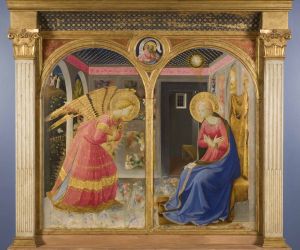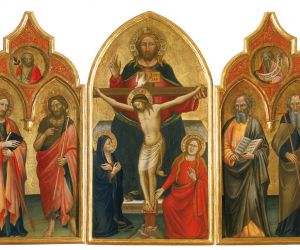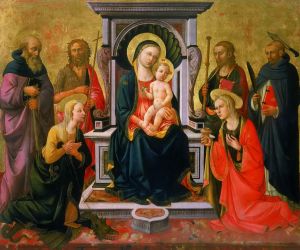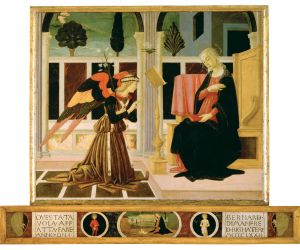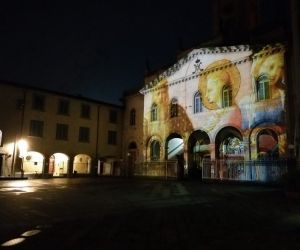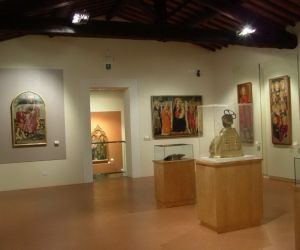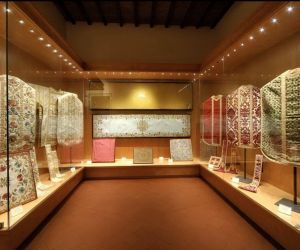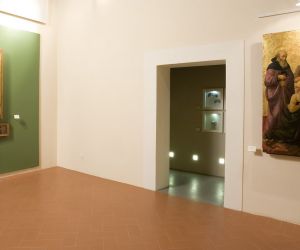Museo della Basilica di S. Maria delle Grazie is a museum of Sacred Art which houses a collection of mostly paintings from fifteenth century Florence, some seventeenth century canvases and Sacred furnishings like silver ornaments and liturgical vestments.
The museum, which was instituted in 1864, has been open to the public since 1990, and in 2005 a new exhibition was curated including works dating from the end of the fourteenth century right up to the seventeenth century. However, the main body of works belongs to the Florentine Renaissance: from the late-Gothic works of Mariotto di Nardo and Giovanni Del Biondo, to the panels of artists, who experienced the extraordinary modernity of Masaccio, like Mariotto di Cristofano, native of S. Giovanni Valdarno, Masaccio’s brother-in-law and perhaps his first teacher, and Giovanni di ser Giovanni known as Lo Scheggia, Masaccio’s younger brother. The new Renaissance vision of the celebrated Florentine artists like Botticelli, Filippo Lippi and Beato Angelico himself can be understood through the works of Jacopo del Sellaio and Domenico di Michelino. The beautiful Decollazione del Battista by Giovanni Mannozzi known as Giovanni da S. Giovanni stands out among the seventeenth century canvases. In 2019 thanks to a new exhibition set up in the Seventeenth Century Room the ancient altar of the Oratory, which was destroyed in a fire in 1569, was rebuilt. Artists such as Buontalenti, Giulio Parigi and grand-ducal craftsmen had worked on the altar.
The masterpiece of the collection is Annunciazione by Beato Angelico, one of three Annunciations on panels painted by the Dominican monk together with those on show at the Museo del Prado in Madrid and the Museo diocesano in Cortona. The work represents one of the absolute masterpieces of the Renaissance in which the religious symbolism of the Middle Ages unites with the new Renaissance vision: we observe the careful use of perspective, the celebration of the greatness of Man and Nature, and the contemplation of the mystery of Incarnation as an experience which is both celestial and terrestrial at the same time.
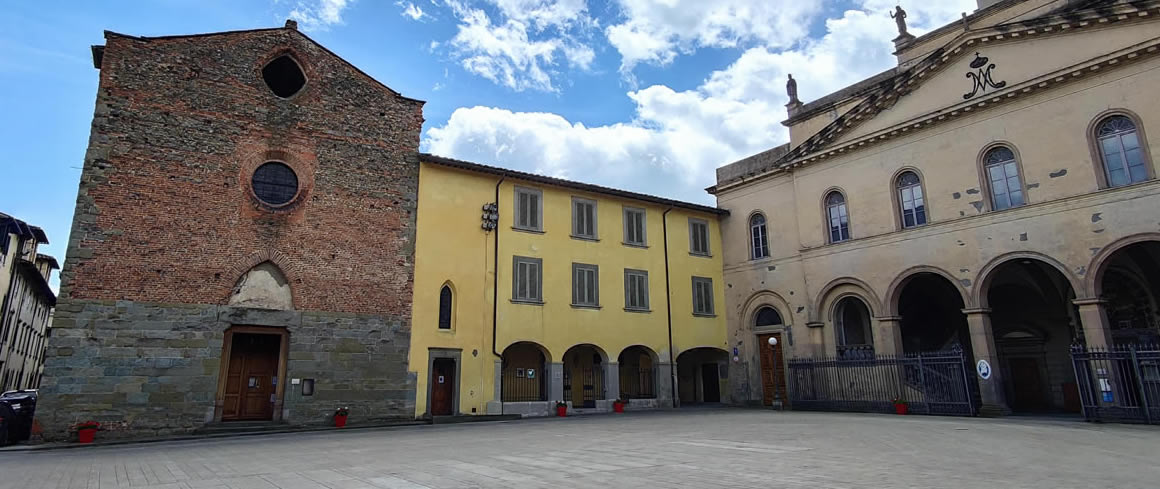
Info e prenotazioni
Indirizzo
Piazza Masaccio 8
Località
San Giovanni Valdarno
Telefono
+390559123735
Orari
dal mercoledì alla domenica
10:00 - 13:00
15:00 - 18:30
15:00 - 18:30
sabato, domenica
su prenotazione
lunedì, martedì
chiuso


